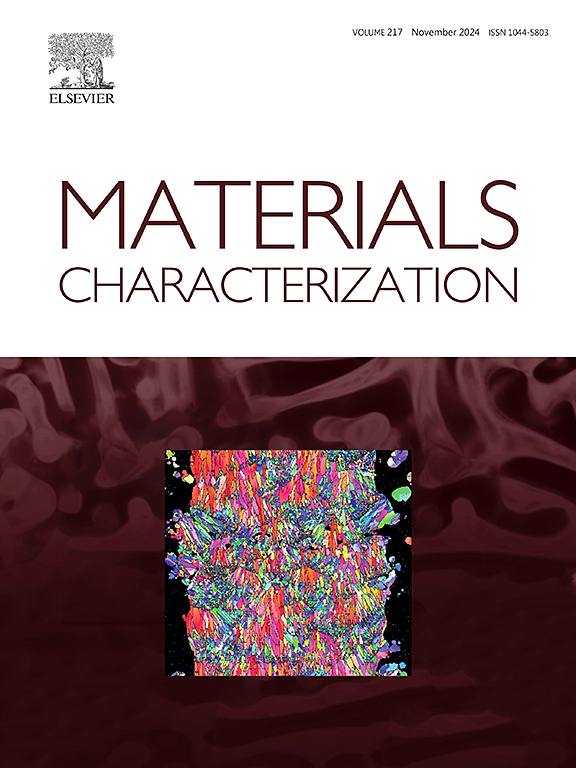多因素及变形机制对Ti-6Al-4V-0.55Fe合金低温冲击韧性的协同效应
IF 4.8
2区 材料科学
Q1 MATERIALS SCIENCE, CHARACTERIZATION & TESTING
引用次数: 0
摘要
系统研究了Ti-6Al-4V-0.55Fe合金在−20℃温度下的等轴组织(EM)和双峰组织(BM)的冲击性能和变形机制。BM试样的冲击性能高于EM试样。BM的起裂区比EM的大,说明BM具有更高的起裂能。在裂纹扩展过程中,层状αs和αp的球化有效地偏转裂纹扩展,缩短裂纹扩展长度,形成弯曲的裂纹路径。BM中发生拉伸孪晶、压缩孪晶和脱孪晶,这些机制有效地耗散了冲击能量。当固溶温度升高至930℃时,在裂纹附近均匀分布高密度的几何必需位错,并伴有断裂的αp和高度扭结的层状αs,从而耗散更多的冲击能。随着固溶温度升高至950℃,αp含量降低,变形协调能力减弱,导致冲击能降低。αp晶粒的球化、片层αs、裂纹路径、αp中的孪晶扭结变形、孪晶与α片层的相互作用以及α集落是影响BM冲击韧性的关键因素。本文章由计算机程序翻译,如有差异,请以英文原文为准。

Synergistic effect of the multi-factors and deformation mechanisms on the low-temperature impact toughness in Ti-6Al-4V-0.55Fe alloy
The multi-factor effects impact property and deformation mechanisms with equiaxed microstructure (EM) and bimodal microstructure (BM) in Ti-6Al-4V-0.55Fe alloys were systematically investigated at −20 °C. The impact property of BM specimens was higher than that of EM specimens. The crack initiation zone of BM is larger than that of EM, indicating that BM has higher crack initiation energy. During crack propagation, the lamellar αs and the spheroidization of αp effectively deflect crack propagation and shorten the crack propagation length, forming a tortuous crack path. Tensile twinning, compressive twinning, and detwinning occur in BM, and these mechanisms effectively dissipate impact energy. As the solution temperature rises to 930 °C, a high density of geometrically necessary dislocations distributes uniformly near the crack region, combining with fractured αp and highly kinked lamellar αs, which dissipates more impact energy. Moreover, the coordination ability of deformation weakens due to the content of αp decreases with rising solution temperature to 950 °C, leading to a reduction in impact energy. Spheroidization of αp grains, lamellar αs, crack path, twin kink deformation in αp, the interaction between twins and α lamellar, and the α colony are the key factors influencing the impact toughness of BM.
求助全文
通过发布文献求助,成功后即可免费获取论文全文。
去求助
来源期刊

Materials Characterization
工程技术-材料科学:表征与测试
CiteScore
7.60
自引率
8.50%
发文量
746
审稿时长
36 days
期刊介绍:
Materials Characterization features original articles and state-of-the-art reviews on theoretical and practical aspects of the structure and behaviour of materials.
The Journal focuses on all characterization techniques, including all forms of microscopy (light, electron, acoustic, etc.,) and analysis (especially microanalysis and surface analytical techniques). Developments in both this wide range of techniques and their application to the quantification of the microstructure of materials are essential facets of the Journal.
The Journal provides the Materials Scientist/Engineer with up-to-date information on many types of materials with an underlying theme of explaining the behavior of materials using novel approaches. Materials covered by the journal include:
Metals & Alloys
Ceramics
Nanomaterials
Biomedical materials
Optical materials
Composites
Natural Materials.
 求助内容:
求助内容: 应助结果提醒方式:
应助结果提醒方式:


